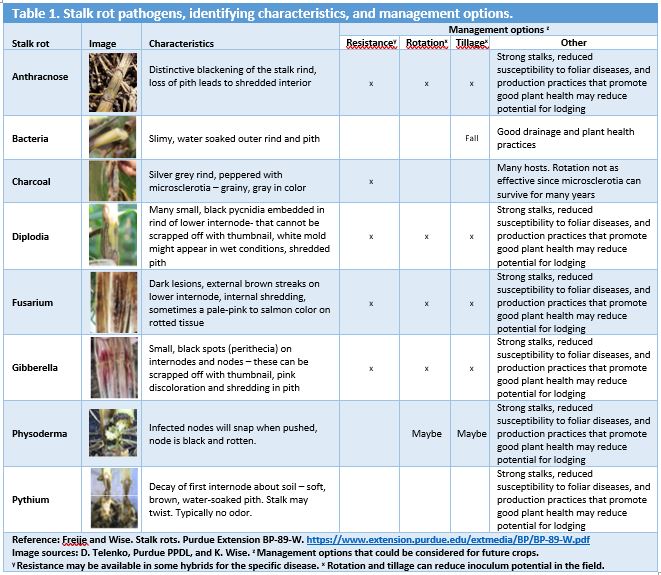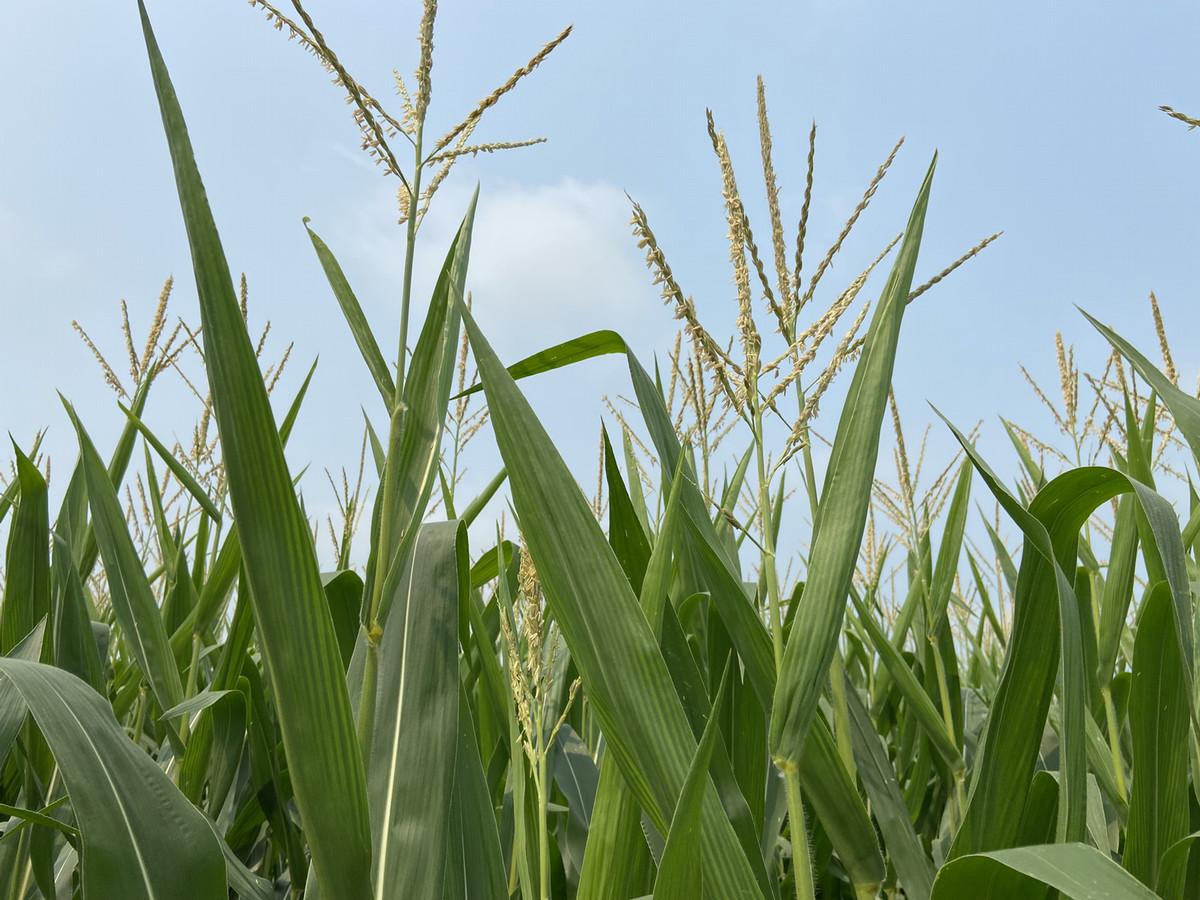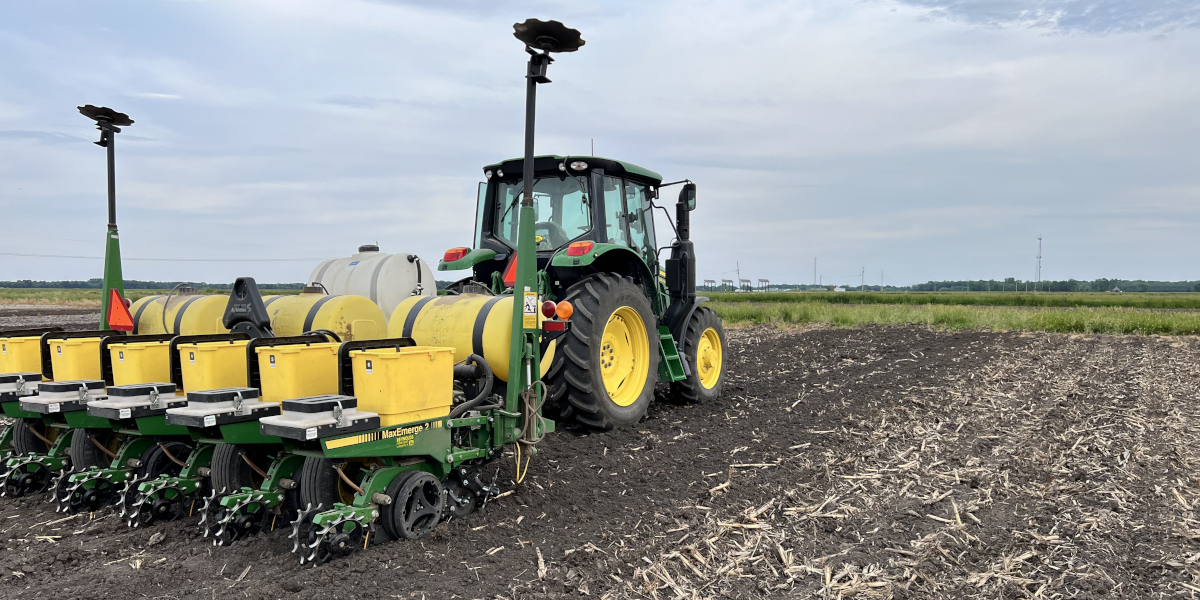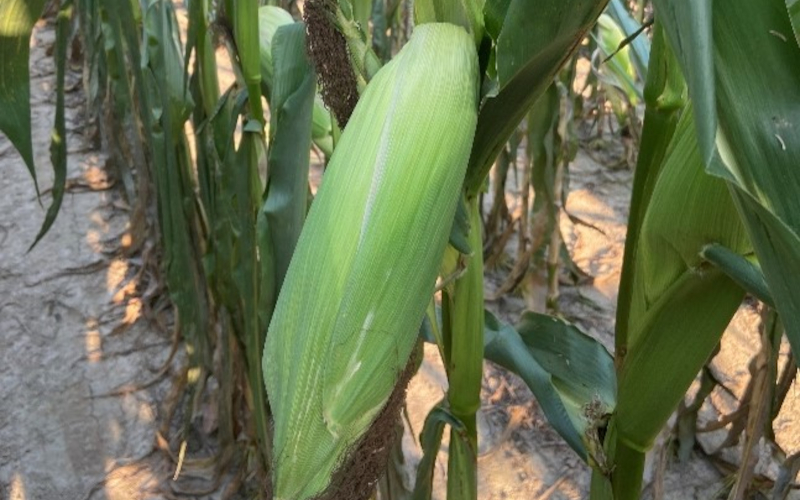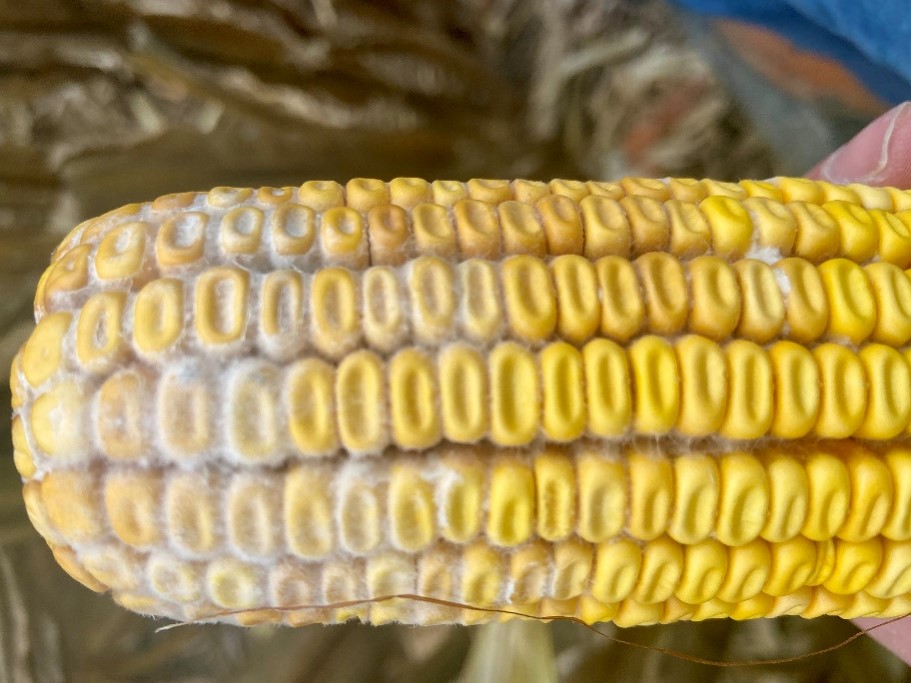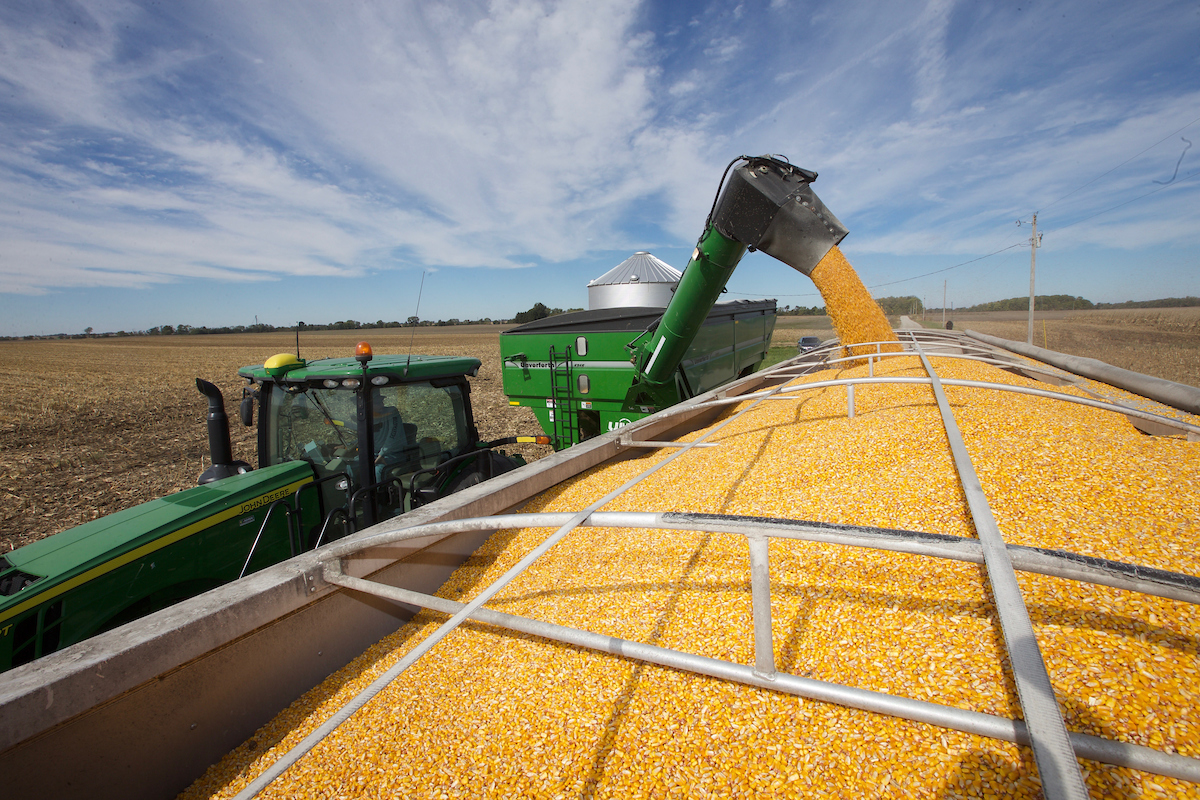Are Your Fields at Risk for Lodging?
Now is the Time to Identify High Risk Fields, What is Causing the Reduced Stalk Integrity, and Management Decisions for Harvest.
There are many factors that can contribute to stalk decline. There are both plant pathogenic causes and abiotic stresses factors that can play a role in reduced stalk integrity, such as drought and flooding. Either way, as stalk tissue becomes compromised below the main ear the stalk may become brittle or weak and be prone to lodging.
As the corn plant loses photosynthetic leaf area due to different stresses such as foliar disease and hot and dry conditions, the amount of carbohydrates available for dry matter deposition into the kernels is also decreased. Therefore, plants respond by remobilizing non-structural carbohydrates from the stalk to supply the demand required by the developing kernels on the ear. This response causes stalk strength and integrity to decrease, and increases a corn plant’s risk of lodging and infection from pathogens that cause stalk rot. Fields with large ear sizes and strong kernel set, which have a high kernel fill demand, may also be at the greatest risk.
There are a number of pathogens that can cause stalk rot including Anthracnose, Bacteria, Charcoal, Diplodia, Fusarium, Gibberella, and Pythium. Some of these stalk rots have very characteristic symptoms that can help identify the specific problem, while others may require laboratory diagnosis (Table 1).
In addition, our research has shown that fields severely blighted by tar spot may also have increased risk for lodging. One, two, or many factors in a field may lead to this risk. Therefore, it is important to get out and scout your fields.
What can you do now – check fields by using the Push or Pinch Test by evaluating 20 plants in at least five random areas in a field.
Pinch Test – grab the stalk somewhere between the lowest two internodes and pinch between your fingers to see if the stalk is strong enough to handle the force – if the stalk collapses, it fails.
Push Test – push the stalk to a 30 degree angle – if it pops back up when released, it passes the test. If not, it fails.
Threshold: If 10% or more of the stalks (2 out of 20 stalks) fail, then consider early harvesting to avoid risk for lodging.
In addition, for those stalks that fail the push or pinch test, it is time to cut them open and determine the root cause, which could be one or many issues. I was just in a field with severe tar spot, but when I cut open the stalks, every one had pink and/or white discoloration in the pith indicating most likely a Gibberella and/or Fusarium infection (the samples are currently being processed for confirmation).
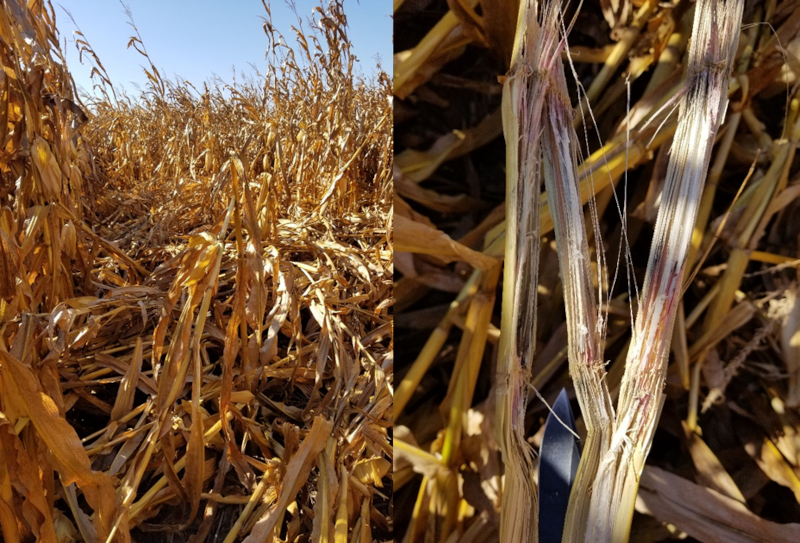
Figure 1. Severe lodging many stalks with symptoms of Fusarium and Gibberella stalk rot in addition to the field having severe tar spot. Photos Darcy Telenko.
What can you do in the future – management options will depend on the specific disease (see table 1). Production practices that promote good plant health including balanced fertilization, appropriate plant populations, and good water management can reduced stresses that might predispose corn to stalk rot. In addition, these key management tools can help mitigate future stalk rot issues.
- Properly diagnosis the stalk rot pathogen. (Samples can be submitted to the Purdue Plant and Pest Diagnostic Lab (https://www.extension.purdue.edu/extmedia/BP/BP-89-W.pdf has a more detailed description of each stalk rot)
- Select hybrids with resistance if available.
- Crop Rotation – rotating to non-host crop will help reduce stalk rot potential in a field. Note that Charcoal rot and Gibberella stalk rot can infect other rotational crops in Indiana
- Tillage – burying infected crop residue will encourage more rapid desiccation and help reduces risk of overwintering in crop residue.
- Good soil drainage and reduced compaction.
- Foliar Fungicides – applying foliar fungicides can help protect crop from foliar diseases that could predispose plant to stalk rot when present, but devoid of foliar disease pressure fungicides applications have not consistently been found to help reduce stalk rot.
